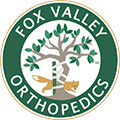To Learn More
(630) 584-1400


Osteoarthritis, sometimes referred to as degenerative arthritis or “wear and tear” arthritis, is a chronic condition of the joints. While it can affect any joint, osteoarthritis most commonly occurs in the hips, knees, neck, and smaller joints of the fingers. It is estimated that nearly 27 million Americans suffer from some form of osteoarthritis.
In osteoarthritis of the hips, the cartilage that covers the ball-shaped top of the thigh bone (femur) and the hip socket begins to break down. This causes pain and swelling, and can impede the normal movement of the joint. As osteoarthritis worsens, the bone beneath these layers of cartilage may begin to thicken, often breaking down and producing bone spurs that can float around in the joint itself.
The combination of the thinning of the cartilage and the degeneration of the hip bones can then lead to an inflammatory process in which proteins and enzymes develop that further damage the remaining cartilage. In the advanced stages of osteoarthritis of the hip, the cartilage wears away and the bones rub together causing greater damage to the joint and increased pain for the patient.
Osteoarthritis most commonly affects patients over the age of 50, though it can occur in younger adults. It was once believed that osteoarthritis was simply the result of age and “wear and tear” on the body, but recent studies suggest that it is actually a disease of the joint. A variety of factors can increase a person’s risk for osteoarthritis including:
The most common symptoms associated with osteoarthritis of the hip include the following:
If you believe you have osteoarthritis, our specialists can help you. Learn more about osteoarthritis treatment now. Call (630) 584-1400 to schedule an appointment.
To Learn More
(630) 584-1400Our specialists have the knowledge & experience to get you back to living life.
Providing excellent care, innovative surgeries, at up to 60% less out of pocket cost.
Welcome to Fox Valley Orthopedics’ patient portal.
Providing excellent care with the convenience of being close to home.
